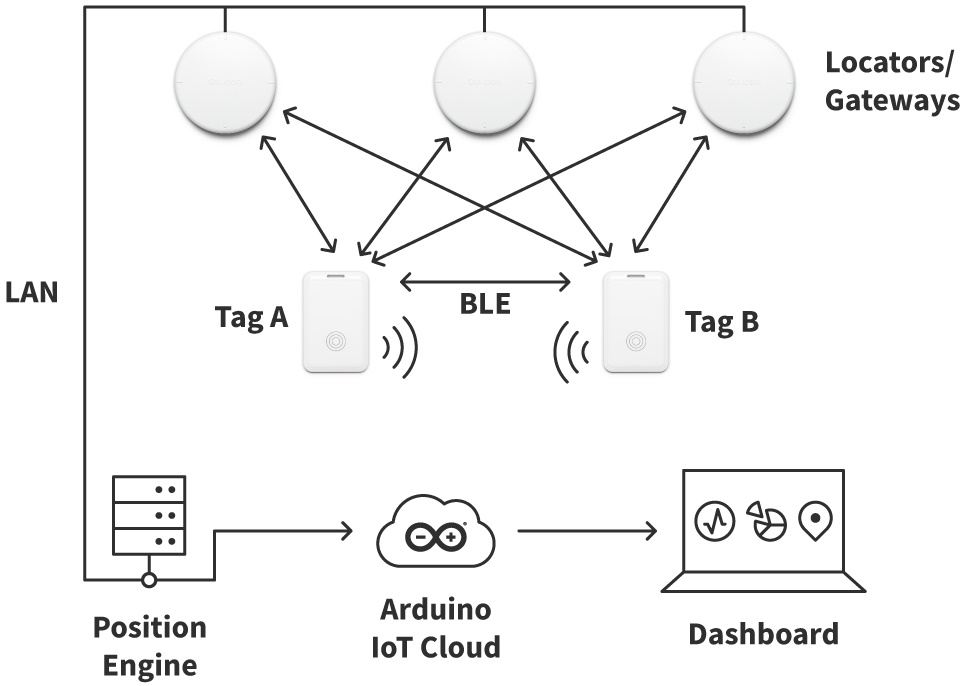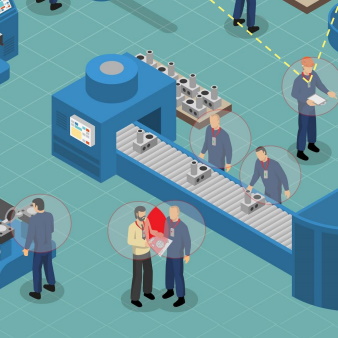One of the all time great English rock bands was The Police. Emerging in the British new wave scene playing a style of rock influenced by punk, reggae, and jazz, they became globally popular in the late 1970s and early 1980s.
In 1979, I saw them playing live at the Queen’s Hall in Leeds, England, and I was amazed by how the three of them — Sting (primary songwriter, lead vocals, bass guitar), Andy Summers (guitar) and Stewart Copeland (drums, percussion) — managed to fill the sound space. One of their songs whose title aptly captures the times in which we currently find ourselves was Don’t Stand So Close to Me.
I think we can all agree that 2020 was the epitome of “trying times” — and that’s just for those of us who survived the ordeal. By the end of 2020, around 320,000 people in the USA had died as a result of contracting COVID-19. As I pen these words on 21 January 2021, the death toll in the USA has passed 410,000, which is staggeringly high when you realize that this is approximately 1/5th of the current worldwide total (see the WorldOMeter website for more details). Even worse, experts are predicting that we will reach 500,000 deaths in the USA before the end of February 2021.
As scary as this is, we have to remind ourselves that we have all sorts of things to be thankful for, like today’s incredible health care facilities, medical technologies, medications, and personal. We also have to remind ourselves that things could be much, much worse. Consider the 1918 influenza (flu) pandemic, for example, which was caused by the H1N1 virus. Although there have been occasional mentions of this in the press over the past year, most people remain blissfully unaware that about 500 million people — one third of the world’s population at that time — became infected. Of these, at least 50 million died (675,000 in the USA), which equated to one in every ten people who were infected and one in every thirty people on the planet.
Just to put this into perspective, as a result of the 1918 pandemic, 50 million people died out of a worldwide population of 1.5 billion people. Today, if we grudgingly include the French, there are around 7.8 billion of us living on the Earth (~330 million in the USA), so the equivalent would be for us to lose 260 million people around the world (~11 million people in the USA).
As an aside, based on the numbers above, when we reach 500,000 deaths in the USA, this will equate to around 0.15% of the US population. By comparison, during the two-year period from 1348 to 1350, the Black Death killed somewhere between 30% and 45% of the population of the British Isles.
As another aside, as you can read on the Atlas Obscura website (and in the book of the same name), St. Mary and All Saints Church in Chesterfield, England, which was built in the late 13th century, has a strangely crooked and twisted spire. By some strange quirk of fate, I once had the opportunity to climb the secret staircase inside this church, stand on the top of the outside of the tower, and rest my hands on the spire (I hope I didn’t leave any grubby finger marks as is my wont). This wood-framed spire was added in the early 1360s. For a long time, it was believed that the twisting of the spire resulted from the fact that its creators didn’t have the necessary expertise because most of the skilled craftsmen had shrugged off this mortal coil during the plague 100 years earlier. There are other theories, but I’m going to stick with this original offering.
Returning to the present, one thing that really disgruntles me is how the wearing of facemasks has become so politicized, with some people blundering and blustering their unmasked way around stores that have a “you must wear a facemask” sign on the door, loudly proclaiming that everyone else is trampling on their rights. What about the rights of the people who own the store and the customers who — like yours truly — think that wearing facemasks is a jolly good idea?
Which reminds me that I just saw an article — The Big Picture: Spreading the Message About the 1918 Pandemic — showing a photograph from 1918 of people wearing masks in California. One has a sign around her neck saying, “Wear a mask or go to jail.” This article contains many nuggets of knowledge and tidbits of trivia, such as the part that reads: “According to a law passed in San Francisco in October of that year, on the day that state-wide infections passed 50,000, anyone seen not wearing a gauze face covering was subject to fines that ranged from $5 to $100 and the possibility of 10 days’ imprisonment.”
According to the CPI Inflation Calculator, $100 in 1918 would be equivalent in purchasing power to $1,725 in 2021, so I’m pretty confident that fines of this magnitude would have made a difference back then; also, that they would make a difference now.
Leaping from topic to topic with the agility of a young mountain goat (you need to be wearing appropriate attire if you wish to keep up), I remember that there were a lot of folks doing DIY when I was a teenager in the 1970s. In the case of your humble narrator and his friends, our DIY projects were electronic in nature. Those were the (good old) days when it was cheaper to build something than it was to buy one; also, it was cheaper to fix something than it was to buy a new one. (I had an uncle who built a Heathkit color television circa the mid-1970s. I can remember how excited we all were when he finally got it working circa the mid-1980s.)
Sad to relate, for a variety of reasons, people grew less fond of making things as the years passed. By the time the 20th century closed its doors and we plunged recklessly into the new millennium, I was starting to feel a tad lonely on the DIY front. Then, when I least expected it, circa 2005, MAKE magazine appeared on the scene and Arduino leapt into the limelight with a fanfare of ciarameddas, where a ciaramedda — as you are no doubt aware — is a type of zampogna with equal length double chanters (once heard, never forgotten). Before we knew it, makers, maker websites, and maker faires were popping up like mushrooms around the world, and I was reunited with my peeps.
“But why are you waffling on about this here,” I can envisage you muttering grumpily and impatiently. Well, if you sit down, take a deep breath, and count to ten, I will be happy to expound, explicate, and elucidate.
The original Arduinos were targeted at a student / amateur / hobbyist / maker audience. However, the combination of concepts like open-source hardware, open-source software, and shields (daughter cards) was so powerful that a huge ecosystem quickly arose. In his spare time, my friend Duane Benson, who is the marketing manager at Screaming Circuits, builds robots equipped with sophisticated sensors. When evaluating peripherals and sensors, Duane often creates prototypes using Arduinos coupled with off-the-shelf breakout boards (BOBs). In fact, Duane presented a paper on this very topic to a packed audience at an Embedded Systems Conference (ESC) a couple of years ago.
The folks at Arduino are not unaware of this trend, which is why they introduced the Arduino Pro line and community, whose mission it is to take things to the next level, providing small and medium companies with the hardware, software, tools, and technologies required to go from concept to prototype to production.
As fate would have it, I was just chatting with the folks at Arduino. They were telling me about an Arduino Pro project they’ve been working on that’s particularly relevant in these trying pandemic times — a physical distancing and contact tracing solution called Distiamo for deployment in factories, offices, and other facilities. The image below shows a Distiamo locator/gateway and associated tag (badge).
![]()
Distiamo locator/gateway (left) and tag in the form of a badge (right) (Image source: Arduino)
Note that, although the tag is presented in the form of a badge in this example, such tags can be presented in customized formats and formfactors (bracelets, key rings, etc.). In the case of physical distancing and contact tracing, the sort of information the company needs to know is who is (and has been) in close contact to whom and for how long. However, it’s also necessary to maintain the privacy of the individuals in question. Thus, the tags have unique ID numbers but do not contain or communicate any personal information. Each tag is associated with a particular person at the system level, and this information is accessible only by authorized administrators as and when necessary.
Distiamo supports dual operating modes providing both fine-grain and coarse-grain measurement. Take a look at the example deployment illustrated below. Observe the locators that are used to provide fine-grain measurement of the locations of everyone in the room. Based on Bluetooth Low Energy (BLE) Angle of Arrival (AoA) fine-grain measurements, these devices can track the location of each tag to an accuracy of 10 cm.

Distiamo provides dual operating modes (Image source: Arduino)
Also observe the two characters in close proximity to each other at the bottom-center of the image. In addition to the locators, when these two tags detect that they are close to each other, they will use BLE Received Signal Strength Indicator (RSSI) to communicate a relative location (“I’m Tag A and I’m close to Tag B”) with a coarse-grain measurement accuracy of around 1 meter.
The reason for this coarse-grained BLE RSSI-based capability is that it continues to work when people are in areas that don’t have locators, such as corridors and staircases and places outside the building like parking lots. In this case, the tags can store the information and then upload it into the main system the next time they come into range of a locator/gateway.
This dual operating mode capability allows facilities to mix-and-match zones to the degree of accuracy and precision required based on the unique requirements of each workspace. Fine-grained tracking can be achieved by placing locators only in those zones where it is most required. Coarse-grained tracking can be utilized in areas with lower people density where threshold breaches are deemed to be less likely, and the same wearable tag enables seamless monitoring as people pass between zones.
The great thing about the Arduino Pro approach is that all of the technologies necessary to support this type of connected Internet of Things (IoT) system are already in place, including the hardware development platforms with the certifications required for industrial deployments. Consider the high-level view of a Distiamo installation as illustrated below.

High-level view of a Distiamo installation (Image source: Arduino)
As we previously discussed, the tags communicate between each other and with the locators. The locators communicate this information in real-time to a central “Position Engine,” which calculates and keeps track of the location of each tag. A software plugin calculates relevant data in real-time (distance between badges, how long each person has been in the vicinity of each other person, how long people have been in close proximity to each other, the number of people in a room, etc.) and compares this data to defined thresholds (e.g., “No more than 20 people in this room at any one time”).
In addition to synchronizing all this data with the Arduino IoT Cloud, the Position Engine also sends commands back to the tags to alert the users of any issues (“You’ve been too close together for too long”). Furthermore, as illustrated in this video, the data in the cloud can be used to provide contact tracing and further analysis.
Thankfully, due to heroic efforts by many people and organizations, a number of COVID-19 vaccines are now in the process of being deployed in countries around the world, with more types of vaccines on the way. On this basis, you may wonder if Distiamo is arriving a little late in the game. I would say that this is not the case for a number of reasons, not least the fact that it will take another six months (if we are lucky) before everyone has been inoculated (and that’s only in the case of developed countries who have greedily, if understandably, snapped up the vast majority of available doses, largely leaving developing countries to fend for themselves).
But the real reason I think Distiamo is relevant is my fear that COVID-19 is only a taste of what is to come on the pandemic front (much like the next mega-quake associated with the San Andreas fault — it’s a case of “when,” not “if”). Cast your mind back to how bad things were circa March/April 2020 when everyone was grabbing anything and everything they could off supermarket shelves and there were major shortages of things like disinfectant wipes, paper towels, and toilet rolls. Now imagine how bad things could get if a new pandemic were to arrive with a virus that had the communicability of Measles and the lethality of Ebola, for example.
Just thinking about this makes me sad. How about you? Do you have any thoughts you’d care to share?





